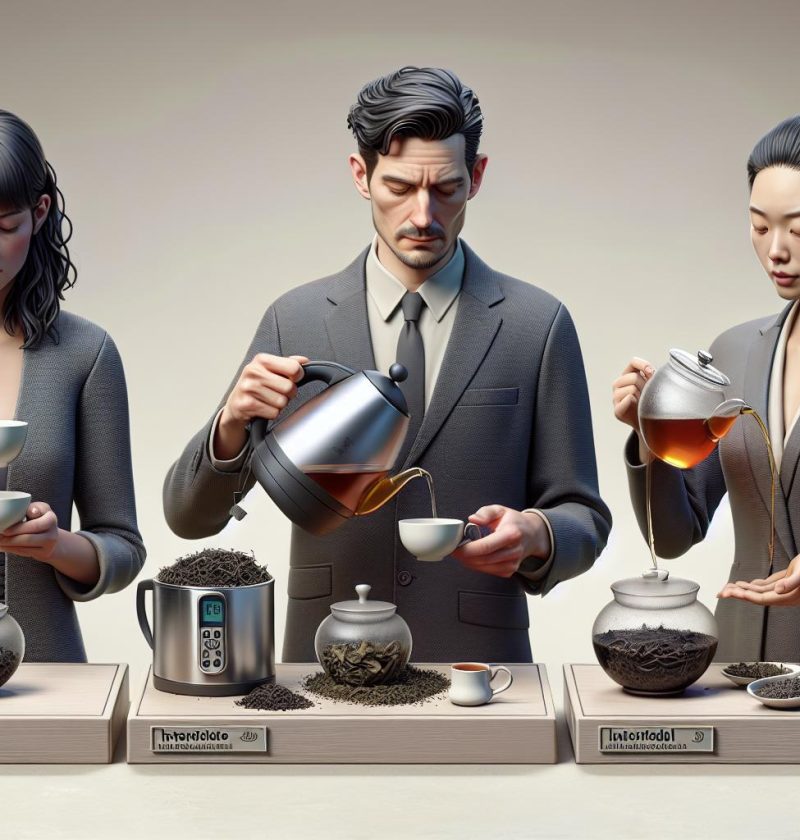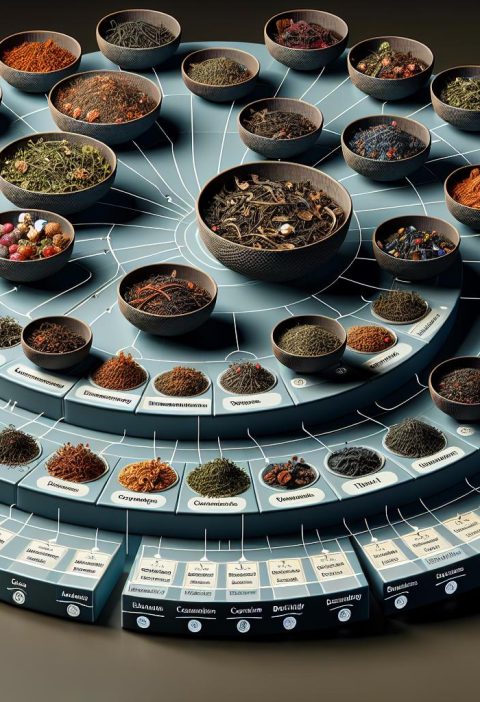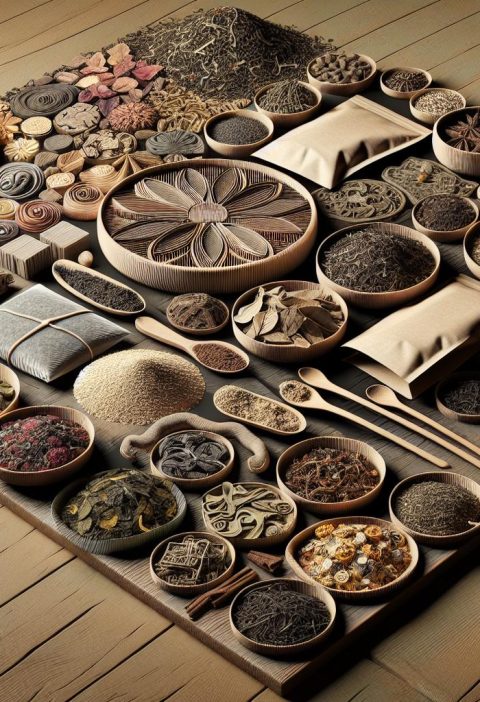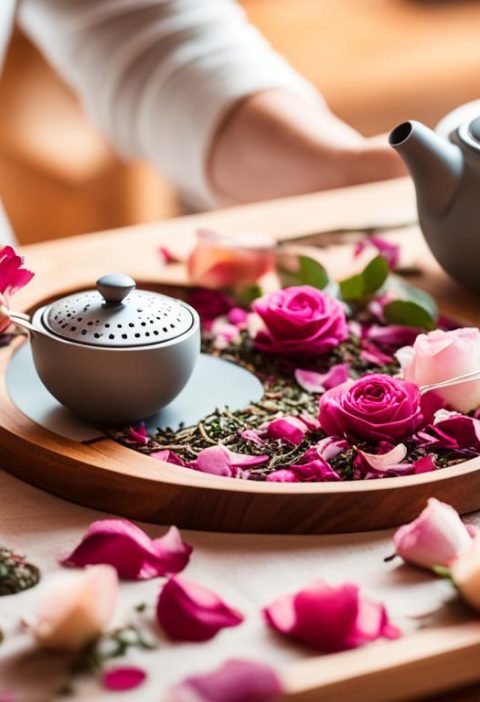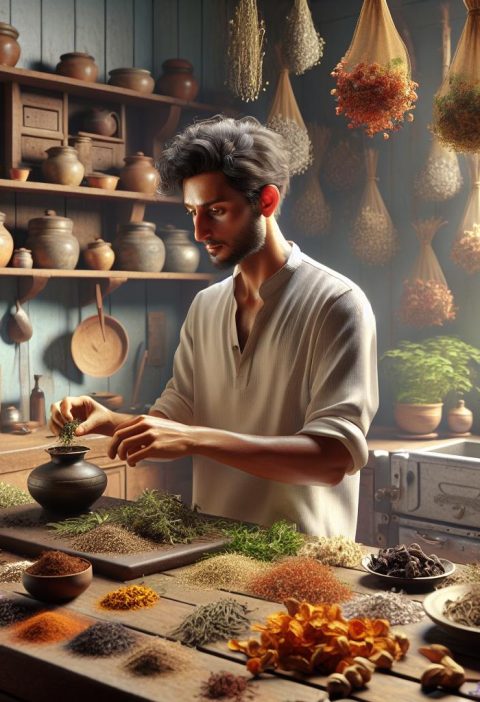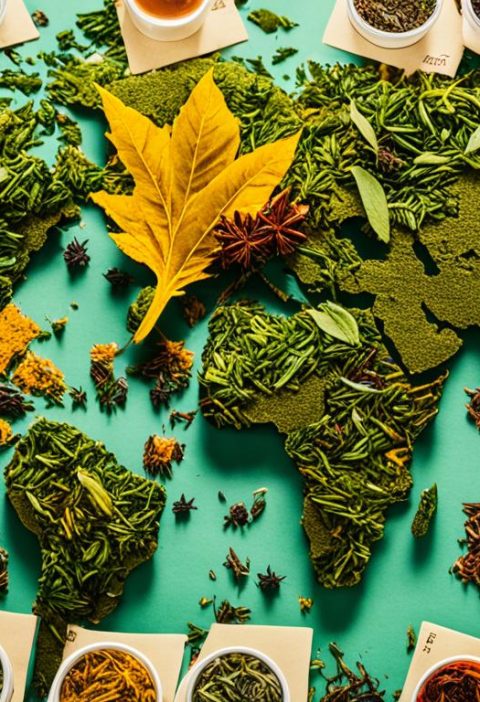So, you’re diving into the world of tea steeping, eager to unlock the secrets of a perfect cup. Whether you’re a green tea enthusiast or a black tea aficionado, mastering the art of steeping is essential to extracting the full flavor and benefits of your brew. Fear not, fellow tea lovers, as we’re here to guide you through the intricate yet rewarding process of achieving steep perfection.
Steeping tea is more than just a simple dunk and wait routine; it’s a delicate dance between time, temperature, and technique. With our expert tips and techniques tailored for beginners, you’ll soon be brewing like a seasoned pro. From selecting the right tea leaves to mastering the ideal steeping time, we’ll walk you through each step to ensure that every sip you take is a delightful experience. So, grab your favorite mug, settle in, and let’s embark on this flavorful journey together.
Choosing the Perfect Tea Leaves
When it comes to selecting the ideal tea leaves, it’s essential to consider various factors that can greatly impact the flavor and aroma of your brew. Whether you’re just starting your tea-steeping journey or looking to refine your palate, here are some tailored recommendations for choosing the perfect tea leaves based on your experience level:
For Beginners: Understanding the Basics
- Start with versatile options: Begin with popular varieties like green tea or black tea to familiarize yourself with different flavor profiles.
- Opt for loose-leaf tea: Embrace loose-leaf teas for a more authentic and robust taste experience.
- Explore flavored blends: Experiment with fruit-infused or floral teas for a touch of sweetness and fragrance.
For Intermediate Enthusiasts: Elevating Your Tea Game
- Dabble in single-origin teas: Delve into the world of single-origin teas to appreciate the unique terroir and complexities of each tea-growing region.
- Try different oxidation levels: Sample teas with varying oxidation levels, such as oolong tea, to explore a spectrum of flavors from light and floral to rich and toasty.
- Consider aged teas: Venture into aged teas like pu-erh for a deeper, mellowed taste with intriguing earthy notes.
- Source rare and artisanal teas: Seek out rare and artisanal teas like white tea buds or handcrafted oolongs for a truly exquisite tea-drinking experience.
- Experiment with tea ceremonies: Dive into traditional tea ceremonies like the Japanese matcha ritual or Chinese gongfu cha to deepen your appreciation for tea culture.
- Develop your palate: Hone your tasting skills by noting subtle nuances in teas, such as floral undertones, umami notes, and lingering finishes.
Understanding Water Temperature

For Beginners: Getting Started on the Right Foot
When it comes to steeping tea, water temperature plays a crucial role in achieving the perfect brew. For beginners, here’s a simple guide to help you get started:
- Green Tea: Opt for water around 175°F to 185°F to prevent bitterness.
- White Tea: Stick to a temperature of around 160°F to 180°F for delicate flavors.
- Oolong Tea: Aim for 185°F to 205°F to bring out its complexity.
- Black Tea: Use water between 200°F and 212°F for bold and robust brews.
For Intermediate Enthusiasts: Fine-Tuning Your Approach
As you progress in your tea-steeping journey, consider these nuances in water temperature:
- Herbal Tea: Varying temperatures can enhance different herbal blends, so experiment between 200°F and 212°F.
- Pu-erh Tea: Embrace boiling water at 212°F to unlock the richness of aged Pu-erh leaves.
For Experts: Mastering the Art with Precision
For seasoned tea aficionados, delve deeper into the realm of water temperature precision:
- Matcha: Achieve perfection with water around 160°F for a balanced matcha experience.
- Rare Teas: Some rare teas may require specific temperatures, so consult expert guides for tailored advice.
Remember, adjusting water temperature based on the type of tea can elevate your tea-drinking experience to new heights. Explore, experiment, and savor the journey of perfecting your tea steeps.
Mastering the Art of Steeping Time
When it comes to perfecting your tea, steeping time plays a crucial role in bringing out the flavors and aromas in your cup. Whether you’re a newbie looking to enhance your tea experience or an expert aiming for precision, mastering the art of steeping time can elevate your tea brewing game.
For Beginners: Steeping 101
For those new to the world of tea, understanding the basics of steeping time is essential. Here’s a quick guide to get you started:
- Green Tea: Steep for 1-3 minutes for a light and refreshing flavor.
- White Tea: Steep for 4-5 minutes to savor its delicate taste.
- Oolong Tea: A steeping time of 4-7 minutes brings out its complex notes.
- Black Tea: Enjoy a strong brew by steeping for 3-5 minutes.
Remember, adjusting steeping time can make a significant difference in the taste of your tea.
For Intermediate Enthusiasts: Experimentation is Key
If you’re ready to explore beyond the basics, experimenting with steeping time can open up a world of flavors:
- Herbal Teas: Try longer steeping times of 5-10 minutes for a more robust infusion.
- Pu-erh Tea: Experiment with multiple short steeps for a rich and evolving taste profile.
By adjusting the steeping time based on the type of tea, you can discover unique flavor combinations and tailor your brew to suit your palate.
For Experts: Precision in Steeping
For tea connoisseurs seeking perfection, mastering precise steeping times is paramount:
- Matcha Tea: Follow the recommended 15-30 seconds for a frothy and vibrant cup.
- Rare Teas: Consult specific guidelines for each rare tea variety to unlock their full potential.
By honing your skills in timing and precision, you can showcase the intricate nuances of rare teas and elevate your tea-drinking experience to new heights.
Unlocking the art of steeping time is a journey that evolves with each sip. From beginners learning the basics to experts fine-tuning their craft, understanding the impact of steeping time is the key to unlocking the true essence of tea.
Different Steeping Techniques to Try
For Beginners: Getting Started with Tea Steeping
- Start with green tea for a milder flavor.
- Use 185°F water and steep for 2-3 minutes.
- Experiment with white tea for a delicate taste profile.
- Steep white tea in 175°F water for 4-5 minutes.
For Intermediate Tea Enthusiasts: Exploring More Flavors
- Dive into oolong tea for a complex taste experience.
- Steep oolong tea in 195°F water for 3-4 minutes.
- Venture into herbal teas for caffeine-free options.
- Adjust steeping times based on the specific herbs used.
- Explore Pu-erh tea for a bold and earthy flavor.
- Experiment with longer steeping times for Pu-erh tea.
- Delve into the world of matcha for a concentrated flavor.
- Whisk matcha powder with 160°F water until frothy.
- Unveil the full potential of rare teas with precise steeping.
- Pay attention to the steeping temperature, time, and water quality for rare teas.
| Tea Type | Water Temperature | Steeping Time |
|---|---|---|
| Green Tea | 185°F | 2-3 minutes |
| White Tea | 175°F | 4-5 minutes |
| Oolong Tea | 195°F | 3-4 minutes |
| Tea Type | Water Temperature | Steeping Time |
|---|---|---|
| herbal Tea | Varies | Varies |
| Pu-erh Tea | Boiling (212°F) | 5-6 minutes |
Enhancing Your Tea Steeping Experience

For Beginners: Mastering the Basics
- Start with green or white teas.
- Adjust water temperature and steeping times accordingly.
- Experiment with different teas to understand flavor profiles.
For Intermediate Enthusiasts: Elevating Your Brews
- Try oolong, herbal, and Pu-erh teas.
- Vary steeping times to explore diverse flavors.
- Focus on precision to unlock unique taste profiles.
- Explore matcha and rare teas.
- Emphasize precise steeping temperature and time.
- Unlock exceptional flavors through meticulous brewing techniques.
| Tea Tips | Relevant Information |
|---|---|
| Green and white teas work well for beginners. | Adjust the water temperature and steeping times accordingly. |
| Oolong, herbal, and Pu-erh teas are recommended for intermediate enthusiasts. | Experiment with varying steeping times to discover different flavors. |
| Matcha and rare teas are perfect for advanced tea drinkers. | Pay attention to precise steeping temperature and time for exceptional flavors. |
Conclusion
Mastering the art of tea steeping is a journey of exploration and refinement. By tailoring our approach to different tea varieties and adjusting steeping parameters accordingly, we can unlock a world of diverse flavors and aromas. Whether we’re beginners starting with green or white teas, intermediate enthusiasts delving into oolong and Pu-erh, or advanced drinkers savoring matcha and rare teas, precision in steeping temperature and time is key to unveiling exceptional taste profiles. Remember, each cup of tea offers a unique experience waiting to be discovered. So, let’s continue our tea steeping adventure with confidence and curiosity, embracing the nuances of each brew to elevate our tea-drinking journey.
